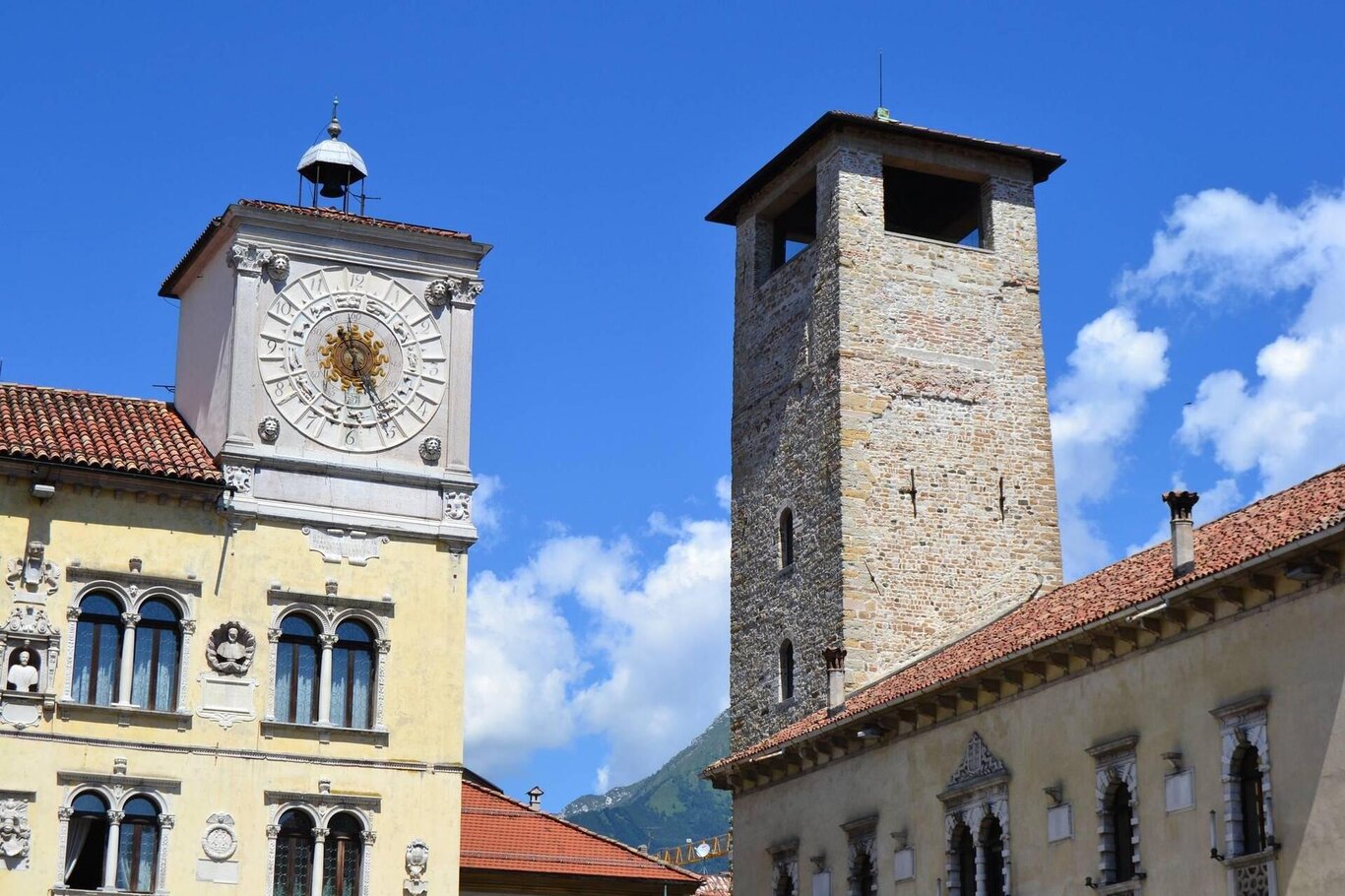Antiqua befestigte Palast der Bischöfe und Grafen, wurde laut der Tradition (oder wahrscheinlich erweitert und verstärkt) Ende des 12. Jahrhunderts von Bischof Gerardo de Taccoli errichtet, der 1196 im Kampf gegen die Trevisaner fiel.
Der Rathausturm trägt die Glocke, deren Klang seit 1403 den Großen Stadtrat versammelte, kurz darauf wurde dort die öffentliche Glocke angebracht, die der Gemeinschaft von Belluno diente, um die Zeit des städtischen Lebens zu markieren, wie die Versammlungen des Adelsrates, und um die Bevölkerung vor Brandgefahren zu warnen. Ein Zwillingsturm an der Ecke zum Dom wurde 1516 abgerissen, um den Platz vor dem Dom zu vergrößern, aber früher musste es einen dritten, zentralen Turm gegeben haben, wie das alte bischöfliche Siegel deutlich zeigt, das genau dieses Gebäude darstellte. Mehrmals umgestaltet, stammen das Portal und einige Elemente der oberen Fenster von der Renovierung, die Bischof Giulio Berlendis im 17. Jahrhundert durchführte. Schwer beschädigt durch das Erdbeben von 1873, erfuhr es eine umfassende interne Umgestaltung, die von Ingenieur Giorgio Pagani-Cesa geleitet wurde, zu der die Eingriffe an der Fassade nach dem neuen Erdbeben von 1936 hinzukamen.
Bereits Sitz des Gerichts, wird es jetzt als kommunales Auditorium genutzt.
